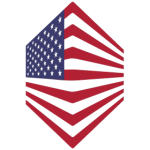Assessment Task 2 Portfolio
Assessment Task 2 Portfolio
Assessment Task 2 Portfolio. Task 2: Portfolio (Individual) | Weight: 70% (30% Part 1 + 25% Part 2 + 15% Part 3)
Assessment task 2 Portfolio (Individual) requires you to develop an intrapreneurial idea to
innovate an existing business of your choice.
To start with, choose an organization that you are already associated with and/or find interesting. This could be:
1. an organization you work or study at
2. where you pursue your hobby or passion such as your sports or fitness club/dance or
music class
3. any other local business whose products or services you are a fan or consumer of such
as your favourite café or hairdresser
4. your own existing business
In other words, select an organization that you relate to in some way. Doing so will make this
assignment more meaningful and engaging for you, ensure real-world relevance, and also
provide a better chance to gain access to conduct field research in the organization.
The rest of this assignment comprises three parts.
Part 1: In Part 1 of the portfolio task, you will focus on the front-end of your intrapreneurial
process, including identification of the innovation opportunity, gathering user-centric insights
and problem definition, and present your insights in the form of a report. Your report should
explicate:
What problem in your chosen organization can your innovation solve? How and why did
you identify this as an opportunity for innovation?
What unmet customer or user need in its market can your innovation address? Which
user and stakeholder groups can it create value for?
This means you will need to address the following in terms of the entrepreneurial process of
Design Thinking/Lean start-up:
1. Choose a problem space (Opportunity recognition):
The purpose of this phase is to explore your innovation opportunity (Week 2 content). This
addresses the question: What problem in your chosen organization will you try to solve? How
and why did you identify this as an opportunity for innovation?
Complete the following:
x Choose your ‘problem space’ – This is the space within the organization which you want
to innovate. Ensure you select an organization that you relate to in some way. As
mentioned earlier, doing so will make this assignment more meaningful and engaging
for you, and also ensure a better chance to gain access to conduct field research in the
organization.
x Identify ‘humans’ in your problem space – Who are the users and stakeholders in your
problem space?
x Use ‘mind-mapping’ to explore your areas of opportunity centred on the users – their
needs, desires, likes, dislikes. What is currently offered? What is not?
x Identify MANY areas of opportunity and then pick one that you will focus on for
implementing your design-led innovation process.
Assessment Task 2 Portfolio
2. Empathy research (User-centered research):
The purpose of this phase is to first conduct your ‘empathic’ human-centered field research to
gather user-centric insights (Week 2/3 content). You will then synthesise the insights gained
from your empathy research to uncover unmet user needs (Week 4 content)
Complete the following:
x Engage in field research to gather insights within your area of opportunity / problem
space using these methods/tools:
o Observation
o Conversation
o Immersion
x Focus on deeper-level, emotional needs; frustrations and pain-points of your users
during your field research
x Synthesise insights from your field research using the following tools:
o Journey mapping
o Personas
o Empathy Map
3. Define phase (Problem Definition):
The purpose of this phase is to narrow down the unmet user needs identified from your field
research into a clear problem statement (also called the POV – ‘Point of View’ statement). This
should then be translated into the HMW (How might we) question (Week 4 & 5 content)
The Empathy and Define phase together will address: What unmet customer or user need can
your innovation address? Which user and stakeholder groups can it create value for?
Complete the following:
x Develop a POV statement – a problem statement framed from the user’s point of view
x Develop a HMW question – a clear question asking how you might solve the problem for
the user
x This forms the starting point to move into the ideating about the solution
NOTE:
Assessment Task 2 Portfolio
x For this part of the assignment, you need to develop the POV/HMW question. Note that
this does not involve ideating about the solution
x You do not, and should not think about the solution yet. That is the focus of the second
part of the assignment.
x The key to this part is how well you engage in and synthesise opportunity recognition,
gathering user-centric insights and problem definition to explore innovative ideas.
Present your insights in the form of a report.
x Include the empathy map, journey map, persona etc. in your report, and empathy
templates and other evidence from your fieldwork as an appendix.
Length: Part 1: 2000 word essay plus visuals, tables and references
Due: This task is to be submitted as a report via UTS Online by 17 September 11:45pm.
Assessment criteria: Assessment of Part 1 is based on:
x Business knowledge and concepts: Robustness of human-centered field research,
Quality of user-centric insights gained (5 marks)
x Critical thinking, creativity and analytical skills Application of appropriate design
thinking/lean start-up tools to explore innovative ideas; Identification of user and
stakeholder groups for value creation; Identification of the unmet customer or user
need (10 marks)
x Communication and Interpersonal skills (written) Clarity of writing and presentation
style (10 marks)
x Business practice oriented skills: Application of the entrepreneurial process to respond
to needs in a real-world professional/innovation context (5 marks)
Assessment Task 2 Portfolio
Part 2: In Part 1 of the assessment, the focus was on the front-end of the entrepreneurial
process. You chose your Problem Space, conducted Empathy field research and then went on to
Define your POV/problem statement and HMW question. In Part 2, you will continue onto the
latter stages of the entrepreneurial process i.e. Ideate, Prototype and Test (Week 6-10 content)
You are expected to present your insights via a 5-slide pack (plus title slide and appendices)
depicting how you applied the entrepreneurial process in this phase, and arrived at your
innovative business concept. Convey your content in the form of ‘infographics’ i.e. graphic
visual representation of information on each slide. This is a contemporary way of presenting
information in concise and visually-appealing manner – a tool that is increasingly used by realworld
professionals to convey key ideas to time-poor people.
Infographics are essentially a combination of information (content) and graphic (images). A
good infographic gives equal importance to both these elements. In other words, infographics
are not just images; they have a lot of content presented in an eye-catching and easily
digestible manner.
There are plenty of online tools available today (many of them are free to access and use) to
develop compelling infographics. Here is a link that sums up the main ones:
http://www.hongkiat.com/blog/infographic-tools/. Or simply browsing “infographic” in Google
Images will produce plenty of examples of infographics that you can browse through for ideas.
You can try your hand at using an online software tool to prepare your slide deck for this
assessment, but you DO NOT necessarily have to. Browsing through these is, however, useful to
get ideas on different types of infographics, which you can then use to develop your own
designs. Remember your main aim is to present information not as bullet points in traditional
power point slides, but along with meaningful images and graphics that make the information
easy to digest.
Assessment Task 2 Portfolio
The ‘infographics’ on the slide deck should cover the following:
x Slide 1: Present your innovative solution in a nutshell.
Depict in a clear and concise manner the problem/opportunity, unmet user need, and
value proposition backing your innovation.
This is essentially a snapshot of your Problem Space, key user needs derived from
Empathy/Define phases and value proposition underpinning your innovative concept
that emerged from the Ideate phase.
Slide 2: Present your innovative solution and how it fills the unmet market need.
What is its unique value proposition? How does it create value for users and
stakeholders?
Here you will zoom into your concept/solution, and how it will fulfil the identified user
needs.
NOTE: You can improve/refine the user needs from what you presented in Portfolio Part
One assignment. For example, based on the feedback on Part One, you may choose to
add or amend.
Slide 3: Present how your value proposition was co-created with potential users. How
did you test the assumptions underpinning your innovative solution with users? How
did you refine your innovation based on their feedback?
Here you will convey how you applied the tools of Assumption Testing and Customer cocreation
to test your prototype, and improved the concept based on user feedback (Test
phase)
Slide 4: Present how your solution will be implemented. What makes your solution
feasible and viable?
Address questions such as: How does your concept (product/service) work? Through
what channels will it be delivered to your users? How much is it priced at? Who is your
target market?
NOTE: You DO NOT need to include a Business Model Canvas
Assessment Task 2 Portfolio
Slide 5: Present your prototype, and its evolution. Depict what aspects of the
prototype you refined based on user feedback on the initial version/s.
Include a 2-D visual of your prototype. Highlight in the image what improvements you
made to its design, based on user feedback that emerged from Customer co-creation
(Test phase)
Length: 5-slide deck presented as ‘infographics’ (plus title slide and appendices)
Due: This task is to be submitted in the form of a slide deck via UTSOnline by 8 October
11:45pm.
Assessment criteria: Assessment of Part 2 is based on:
x Business knowledge and concepts: Robustness and novelty of innovative solution;
Curation of a clear innovative solution with a unique value proposition (5 marks)
x Critical thinking, creativity and analytical skills Application of appropriate design
thinking/lean start-up tools to develop the innovation; Rigour of designing and testing
the prototype on potential users; Development of a viable and feasible solution (10
marks)
x Communication and Interpersonal skills (written) Clarity and visual appeal of
infographics in slide deck (5 marks)
x Business practice oriented skills: Application of the entrepreneurial process to respond
to needs in a real-world professional/innovation context (5 marks)
Part 3: Present a reflective review of your journey as an intrapreneur/entrepreneur in this
project/subject.
Assessment Task 2 Portfolio
The purpose of this review is to critically reflect on and analyse existing
theories and concepts on ‘entrepreneurial traits, skills and processes’ in light of your own
personal experience. Present your insights in the form of an essay backed by critical reflection
and analysis that addresses aspects such as:
x How did engaging with real humans/users change the direction that your
solution/prototype took?
x What was it like to approach users as part of conducting empathy field work, and
then to show rough prototypes/unfinished work to them?
x How did working in a collaborative, human-centred, fast-paced iterative way feel?
x Which aspect of the design thinking/lean start-up process did you find most
interesting, enjoyable and useful?
x How did following this entrepreneurial process differ from a traditional approach
entrepreneurs adopt to come up with an innovative idea?
x What skills and traits make a successful entrepreneur?
x What resources and capabilities are most useful for an entrepreneurial team to draw
on?
x What would you do next to take your entrepreneurial project forward?
NOTE: You do not have to cover all of the above. Highlight what is most relevant in your context
based on your research and experience.
Your essay should contain in-depth reflective insights and logically analysed content presented
in coherent language and style. You are also expected to draw upon a wide range of robust and
relevant sources (both academic literature and other reports), with a minimum of 5 high-quality
references, to benchmark your personal experience with existing literature. Images, photos,
graphs, charts and other supporting materials can be used.
Length: Part 1: 1000 word essay plus visuals, tables and references
Due: This task is to be submitted as a report via UTS Online by 29 October 11:45pm.
Assessment criteria: Assessment is based on:
x Business knowledge and concepts: Evidence of understanding of key theories and
concepts in entrepreneurship (5 marks)
x Critical thinking, creativity and analytical skills: Evidence of in-depth critical reflection
on the entrepreneurial process, and logical analysis of engagement in design
thinking/lean start-up (5 marks)
x Communication and Interpersonal skills (written) Quality of content, clarity of writing
and presentation style (5 marks)






